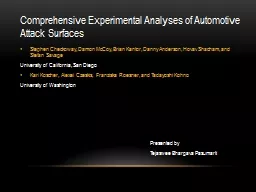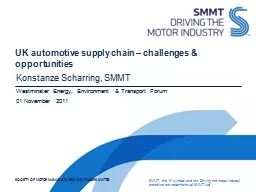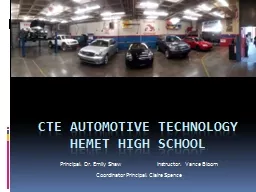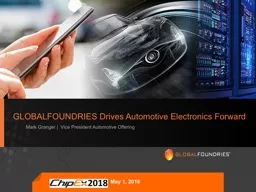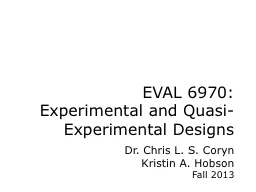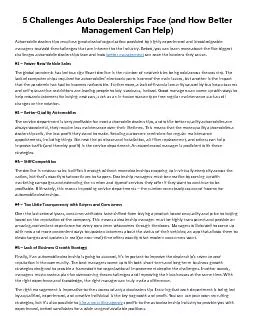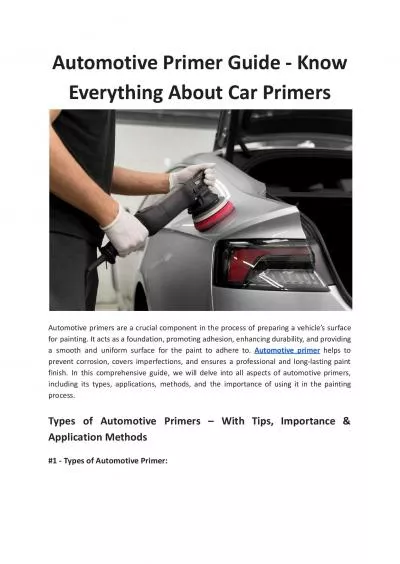PPT-Comprehensive Experimental Analyses of Automotive Attack Su
Author : lindy-dunigan | Published Date : 2017-09-24
Stephen Checkoway Damon McCoy Brian Kantor Danny Anderson Hovav Shacham and Stefan Savage University of California San Diego Karl Koscher Alexei Czeskis Franziska
Presentation Embed Code
Download Presentation
Download Presentation The PPT/PDF document "Comprehensive Experimental Analyses of A..." is the property of its rightful owner. Permission is granted to download and print the materials on this website for personal, non-commercial use only, and to display it on your personal computer provided you do not modify the materials and that you retain all copyright notices contained in the materials. By downloading content from our website, you accept the terms of this agreement.
Comprehensive Experimental Analyses of Automotive Attack Su: Transcript
Download Rules Of Document
"Comprehensive Experimental Analyses of Automotive Attack Su"The content belongs to its owner. You may download and print it for personal use, without modification, and keep all copyright notices. By downloading, you agree to these terms.
Related Documents

